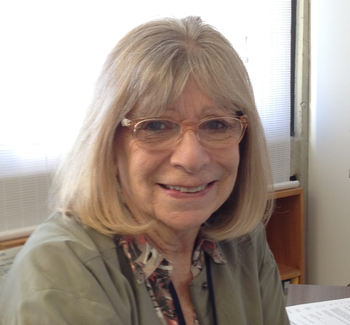Silvia Garzoli receives the NOAA Distinguished Career Award
Dr. Silvia Garzoli is an internationally respected member of the physical oceanographic community whose research brings credit to NOAA and AOML. She continues to be an outstanding member of the NOAA science team and for her past federal service has been awarded the NOAA FY13 Distinguished Career Award.
Many congratulations to Cooperative Institute for Marine and Atmospheric Studies (CIMAS) scientist Dr. Silvia L. Garzoli on being awarded the NOAA FY13 Distinguished Career Award. This award has been given in recognition of Silvia's excellence in scientific research of Atlantic Ocean dynamics and extensive service to the oceanographic community. Silvia has served as the Director of the Physical Oceanography Division (PhOD) of Atlantic Oceanographic and Meteorological Laboratory (AOML), and later as AOML Chief Scientist. During her impressive career, she has made countless scientific contributions, written or co-authored over 70 peer- reviewed publications that have received more than 1300 citations from scientists in over 30 different countries, led international groups of scientists in planning large field efforts, mentored numerous early- and mid-career scientists, and provided strategic input to NOAA that will influence climate-related policies and the global ocean observing system for years to come.

Silvia's research is characterized by the utilization of data belonging to a wide variety of instrumentation, that has helped to describe and to improve our understanding of oceanic physical processes and features, particularly in the South and tropical Atlantic, and their relationship with climate signals. She has been a leader in the expansion of the surface drifter program, the Argo profiling float program, and the expendable bathythermograph (XBT) program. She has also long been a champion of developing technology that will enable sampling of ocean currents in more cost effective ways, such as inverted echo sounders. Through the extensive use of this technology, she has helped to improve our understanding of the circulation pathways in the South Atlantic, processes that control the flow of water across the equator, and variability and climate linkages of the Deep Western Boundary Current. Her work on oceanic currents, particularly in the South Atlantic, can without question be fairly termed "pioneering". On the national and international level, Silvia has led more than a dozen field programs including the North Brazil Current Rings field program, the Benguela Current Experiment, the Agulhas Current Experiment, and the Brazilian-Malvinas Current Confluence Experiment. As a recent example of the impact of her leadership, she has led the development of NOAA's response to a key near-term priority in the 2007 U.S. Interagency Ocean Research Priorities Plan by bringing together national and international partners to plan for a new observing system for the Meridional Overturning Circulation (MOC) in the South Atlantic. While the full implementation of this program is ongoing, international partners have already 20 moorings in support of the South Atlantic MOC Basin-wide Array.